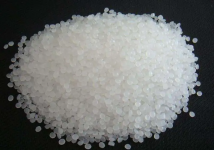read: 682 time:2025-05-28 04:25:58 from:化易天下
Aniline is a fundamental compound in organic chemistry, often used as a precursor in the manufacture of dyes, drugs, and polymers. A common question that arises in both academic and industrial settings is why aniline is basic in nature. This article will explore the chemical structure of aniline, its electron distribution, and how these factors contribute to its basicity.
Aniline, chemically represented as C₆H₅NH₂, is an aromatic amine. Its structure consists of a benzene ring (C₆H₆) attached to an amino group (-NH₂). The amino group is key to understanding why aniline is basic in nature. In aniline, the nitrogen atom in the amino group has a lone pair of electrons, which plays a critical role in its basic properties.
The basicity of aniline is primarily due to the lone pair of electrons on the nitrogen atom. These electrons are available for donation to an acid (typically a proton), which is the hallmark of a basic compound. When aniline acts as a base, it donates its lone pair of electrons to form a bond with a proton, resulting in the formation of an anilinium ion (C₆H₅NH₃⁺).
However, the electron-donating ability of the lone pair is somewhat influenced by the benzene ring. The benzene ring has a delocalized π-electron system, which can overlap with the lone pair on the nitrogen, reducing its availability for protonation. This interaction slightly diminishes the basicity of aniline compared to aliphatic amines, where no such delocalization occurs.
To better understand why aniline is basic in nature, it's helpful to compare it with other amines. In aliphatic amines, the nitrogen's lone pair is fully available for protonation, making them generally more basic than aniline. However, aniline is still basic because the nitrogen's lone pair is not entirely delocalized into the aromatic ring; a significant portion remains available to accept protons.
Several factors can influence the basicity of aniline. Substituents on the benzene ring, for instance, can either increase or decrease its basicity. Electron-donating groups (such as -CH₃ or -OH) increase electron density on the nitrogen, making aniline more basic. Conversely, electron-withdrawing groups (such as -NO₂ or -Cl) reduce electron density on the nitrogen, thereby decreasing its basicity.
In summary, why aniline is basic in nature can be attributed to the lone pair of electrons on its nitrogen atom, which can accept protons. However, the interaction between the lone pair and the aromatic ring slightly moderates its basicity compared to other amines. Understanding these nuances is crucial for chemists, especially when predicting the behavior of aniline in various chemical reactions or industrial applications.

Jincheng Petrochemical's 300000 ton polypropylene plant successfully trial production, 2024 polypropylene market analysis

The ABS market remains sluggish, what is the future direction?

Market differentiation of bisphenol A intensifies: prices rise in East China, while prices generally decline in other regions

The production method and process flow of silicone acrylic lotion, and what are the common raw materials